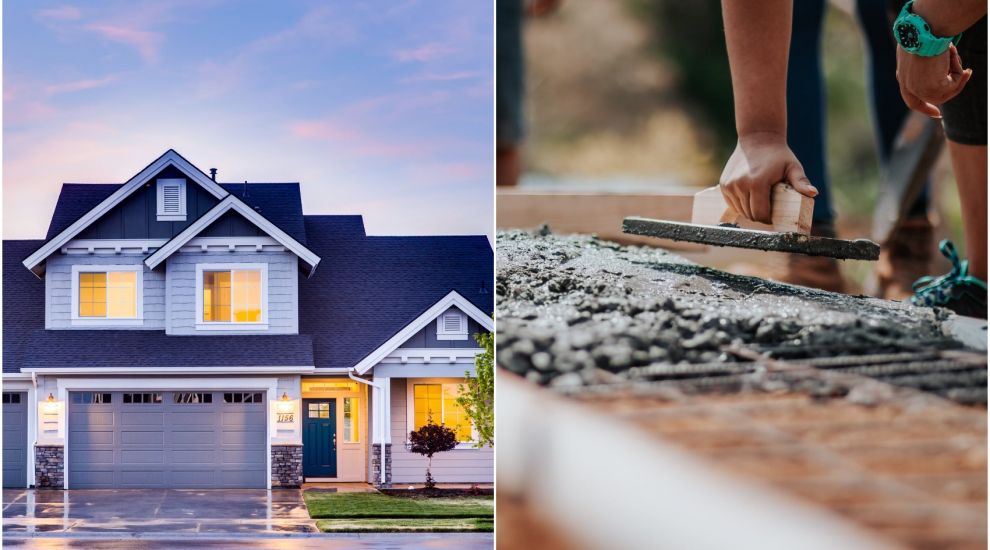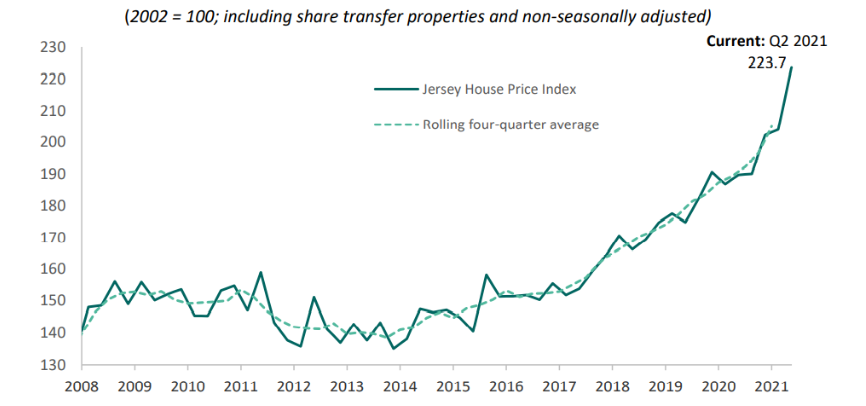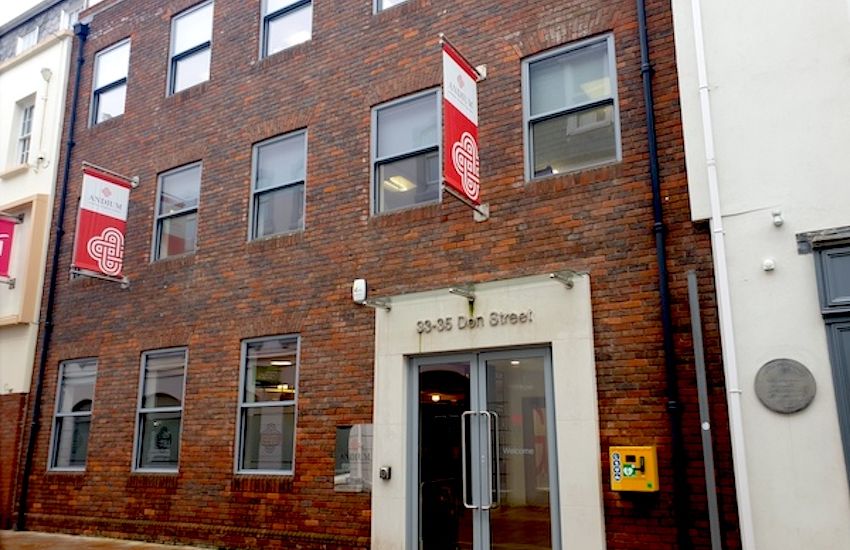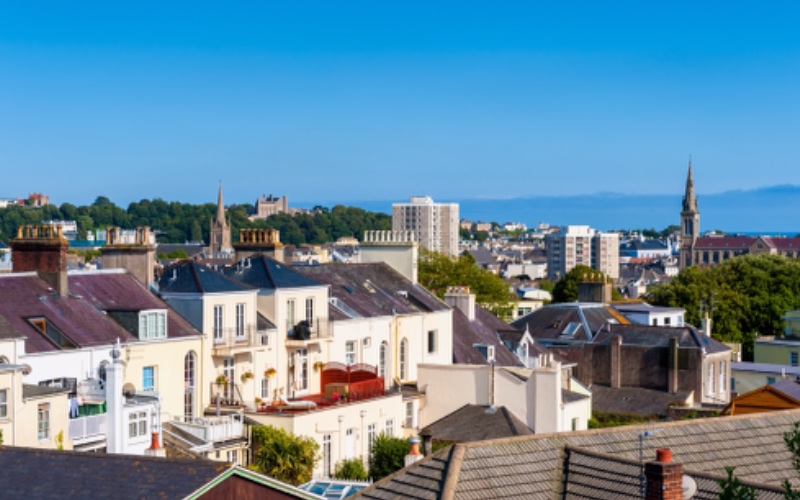


Building 'pocket' homes, offering subsidies, cutting share transfers, more key worker accommodation and a more pedestrian-friendly St. Helier all are ways that have been put forward to tackle Jersey's housing crisis this week.
The issue of affordable housing has particularly come under the spotlight this week, with a new Scrutiny report, a panel on the crisis being held and the plans for the 153 South Hill apartment development being put in.
Taking points from the 'Affordable Housing Supply and Delivery Review' - a report put together by a panel of politicians investigating how to address the housing crisis - and conversations held at yesterday’s Association of Jersey Architects (AJA) panel on whether St. Helier is the answer, as well as looking at the wider picture, Express explores some of the ideas put forward to create more affordable housing on the island...
In the Chair’s forward to the new Scrutiny report - which put forward 64 key findings and 61 recommendations - Constable Mike Jackson noted that, “given an average house price presently at £630,000 and rental for a two-bedroom flat being £1,600 per month, it is clear that Jersey prices compare with those in London where salaries are greater and there is a broader choice.”

Pictured: There was an 18% price hike between 2020 and 2021 in average house prices.
The report goes on to summarise that “it is apparent from our review that Jersey’s highly competitive property market is creating a surge in pent-up demand which cannot keep pace with supply, leading to an overheated housing market with imbalanced supply and ultimately resulting in increasing property prices.”
Looking at the figures, the report notes that in August 2021 the Jersey House Price Index showed prices have “been rising over the past five years with a considerably sharper increase in the last year.”
Taking a closer look at this Index, which Express reported on at the time, there has been an 18% price hike between 2020 and 2021, with one-bedroom flats meeting their highest mean price to date - £315,000 up £21,000 from the previous quarter.
Though the States Assembly voted against officially declaring a housing crisis, yesterday Constable Simon Crowcroft told an audience gathered in Town Hall for the AJA meeting that "everyone thinks there’s a housing crisis.”
From a social housing perspective, Andium Homes are currently looking to tackle the issues with a target of 3,000 new homes by 2030.
Speaking about where the project is currently at, Stephen Lilley, Head of Capital Projects at Andium, told the AJA panel yesterday that they had “completed approximately 350 of those 3,000 to date, we have 400 on site under construction and we have another 700 which are due to start at various points during 2022.”
He added by crude calculation, this was around 50% of their target - he further explained that 65% of the homes provided for in the target will be built in St Helier.

Pictured: Stephen Lilley said that Andium had completed 350 of its targeted 3,000 by 2030 so far.
However, he did acknowledge that Andium did need to find new sites to get to this target, and was “ever hopeful that a surplus Government site will be offered up in that regard.”
In terms of access to these homes, the Scrutiny report says that the eligibility requirement for the Affordable Housing Gateway is “too restrictive and prohibits legitimate access to individuals in need of social housing,” and recommends that guidelines for eligibility for social rent and affordable purchase properties should be revised.”
It also asks the Government to make sites available more quickly, saying that they should seek to have them released by the end of the second quarter of 2022, and furthermore consider releasing the sites at less than their market worth.
Another recommendation the Scrutiny report puts forward is to give “financial incentives” to encourage elderly people to ‘right-size’ from their current homes, as it observes that “often they don’t have the financial means that will enable them to move and this should not affect their rights to the Long Term Care scheme.”
The report also puts forward the suggestion that “build-to-rent provides a potential opportunity and role for the private sector to assist in contributing to the delivery and supply of decent housing, and at scale”, but says that further research would be needed to understand appetite for it.
The Scrutiny report acknowledges that Housing Minister Deputy Russell Labey has directed that Andium rents be frozen in 2022.
Looking more broadly at the current 90% market rent for social homes, the panel found that “Andium Homes’ view that charging less than 90% market rent for social housing will not directly impact the affordability of their homes for tenants on the basis of the role played by income support payments.”
The report further observes how: “34% of Andium’s tenants have their rent paid by income support and 60% have some level of payment from income support to cover their rent.
“These income support payments to Andium total £17m and are eventually paid back to Treasury when Andium make their £30m annual return to Government. This results in a £13m surplus being paid back on top of the income support payments.”

Pictured: Constable Mike Jackson questioned whether it was right the Government were taking £13m out of Andium that did not come from income support.
This surplus issue was flagged up by Constable Jackson, who said that it “must be questioned whether it is right that Government are taking £13m out of Andium and preventing them from increasing the pace of what they’ve been charged to do – deliver affordable homes.”
His panel's report also recommended that the definition of affordable housing should be revised to reflect income levels.
However, the report states how the Housing Action Plan to address “excessive rent rises in the private rented sector are not planned until towards the end of 2022.”
From the perspective of the private sector, the Scrutiny panel recommended reinstating a rent tribunal process to help protect tenants against excessive rent rises, and conduct a wider investigation on the impact of buy-to-let properties on housing affordability.
On the hotly debated issue of High-Net-Worth individuals moving to the island and being able to own additional rental property, it states the effects are “unknown”, but that it is anecdotally thought to be having a detrimental effect on the inflating market.
Similarly, it recommends a review into share transfers, saying that though the Jersey Development Company made the decision not to sell to overseas purchasers around 18 months ago, structuring of apartment developments tends to be via share transfer.
“Whilst action can be taken to prevent that sale to foreign investors on the first transaction, onward transactions are then not preventable,” it states, though notes that both the new South Hill development and future JDC developments will be flying freeholds and only ever be transacted to residentially qualified individuals.
It recommends the Government should “explore further the possibility of whether the sale of existing share transfer properties can be restricted.”
At yesterday’s AJA panel, architect Mike Waddington suggested that an amount of smaller homes could be built, stating: “I’m not suggesting it’s the answer to everything, but there’s a place for it.”
Speaking about the concept in more detail to Express, he said that “Pocket Living, who are a London based development company, came to Jersey, and their core product is quite small, 25-30 square metre apartments.”
Though at the moment, their design is too small for Jersey’s minimum designs for a single apartment, which stands at 56 square metres, Mr Waddington argued they had potential to help tackle the crisis.
“They’re super well-designed inside so actually you could argue that a 50 square metre badly designed apartment is less liveable, and they offer an opportunity for people buy an apartment at a more affordable rate.
“Obviously Jersey would be careful not to have too many of these, but I think at the moment the door is almost shut - opening that door a little bit and allowing an amount of those units would help.”
Equally, during yesterday’s panel, it was also suggested by an audience member that allowing taller buildings could help.
Ginny Duffell, Principal Planner and Head of Development Control responded to this suggestion by pointing out it would have to be within the Island Plan policy, but that “if it’s really really well designed and in the context that’s appropriate, then absolutely” - though it would have to remain within the limits of 18m, or 7m if above neighbouring properties.
Beyond reimagining the scale of homes in Jersey, Mr Waddington added that there was also room to re-establish its streets, lowering traffic levels and creating a more pedestrian-friendly heart of town limiting traffic.

Pictured: Mike Waddington put forward the idea of a ring road surrounding St. Helier which allowed its centre to be more pedestrian-friendly.
“I think there is merit in exploring the idea of the ring road becoming a defensive barrier for more pedestrian friendly streets within the town centre,” he told Express.
“So we could have for example have satellite car parks on the ring road and we could make the centre of Saint Helier a much more walkable, liveable interconnected series of streets.
“And those streets could have some parking, disabled access obviously, greenery, places for kids to play, they could be lined with new developments and existing developments that have their own front doors, there's surveillance of the street and you create a sense of neighbourhood and community.”
An area that the Scrutiny report particularly recommended improvement in was ensuring key workers - such as doctors, nurses, teachers and social workers - have decent affordable housing, having found that it “is a significant issue for attracting and retaining key workers on the island.”

Pictured: It was suggested the definition of 'key worker' be expanded to include those involved with the planning and construction of homes.
They illustrate this using submissions from key workers, one of whom stated that “as a key worker who came to the island with a family and 2 dogs finding rental property has been massively challenging and has led to us considering returning to the UK on more than one occasion.
They added that: “the government urgently needs to look at family friendly key worker accommodation which is of good quality and affordable. Currently 80% of one wage goes in rent and there is no recognition of this in income tax rates.”
It comes after last week, the Government admitted 11 out of 20 social workers hired in a 2019 initiative had left their roles, with the cost of living being listed as one of the factors behind some departures.
Discussing the future of key worker accommodation on the island, the Scrutiny report notes that Housing Action Plan states that a clear definition of key workers was to be decided on, and 25 key worker homes a year would be delivered through until 2025.
However, it it gave some more recommendations in this area too, suggesting ‘expanding’ the definition to include vital roles in affordable housing development, planning and construction.
It also discusses how the population policy should consider “how workers and residents gain entitlement to more settled housing tenures, especially if they are in specific job roles which are critical to the economic and social well-being of the island.”
It added that it should ensure “a ‘rent-to-buy’ offer is developed by the end of 2022, which enables those workers to establish long-term roots in Jersey and means that those workers do not necessarily need to move in order to acquire their homes.”
The housing and planning sector itself has also been hit by recruitment issues, hence the recommendation for them to become classified under the ‘key worker’ banners.
This is perhaps most notable in planning and development, where it was recently acknowledged that one in four roles in the Government’s Infrastructure, Housing and Environment department were lying dormant.
The Scrutiny report recommended that the Environment Minister “identify the extent to which the planning team is short on personnel sufficient to support the planned increase in housing production,” and then develop a recruitment strategy which classifies them as key workers by the first quarter of 2022.
In terms of actually getting the homes built, the Scrutiny report voices that “there is a real concern that the construction sectors in both the UK and Jersey are becoming stretched to capacity and increases in raw materials will be contributing to higher build costs, which in turn will have an effect on the viability of schemes but also the cost of new homes.”

Pictured: The Director General of Infrastructure, Environment and Housing remarked on more expensive constructive materials in a scrutiny hearing this week.
Indeed, this reflects comments from Infrastructure, Environment and Housing Head Andy Scate earlier this week, who also mentioned that some materials were seeing “double digit percentage” increases in price due to their scarcity.
The Scrutiny report recommends that ‘Modern Methods of Construction’ should be researched and deployed to help these capacity pressures - these are buildings encompassing a range of technologies, including timber frame systems, prefabricated ‘pods’ used in traditional builds, and fully constructed modules that are transported to sites for rapid installation.
Noting there had already been trials of ‘MMCs’ from Andium, the report said that the main barrier was currently shipping and transportation costs, and that it was “the Construction Council’s view that developing new supply chains to increase competition would enable MMC at larger scale, as would on-island assembly facilities for bathroom/kitchen pod production.”
The long-awaited population policy is also seen as an integral part of Jersey’s housing strategy going forward, and is due to be lodged at the end of this year for debate on 18 January.
However, the island’s census will not be informing this policy as it will only be available in March, something which Natasha Day told the AJA panel was important to understanding the island’s population.
Discussing the urgent need for a population policy, the report recommended that “the Council of Ministers should finalise the emerging policy on population and in-migration management without delay and, in so doing, ensure that a weather eye is retained on how the agreed policy will impact on current policies for new housing provision.”
It added that “the planned assumption of 800 net-inward migration each year is considerably less than what has been permitted in previous years and therefore the successful delivery of the right number of homes will be contingent on the projected assumptions being accurate and strictly enforced.”
Comments
Comments on this story express the views of the commentator only, not Bailiwick Publishing. We are unable to guarantee the accuracy of any of those comments.